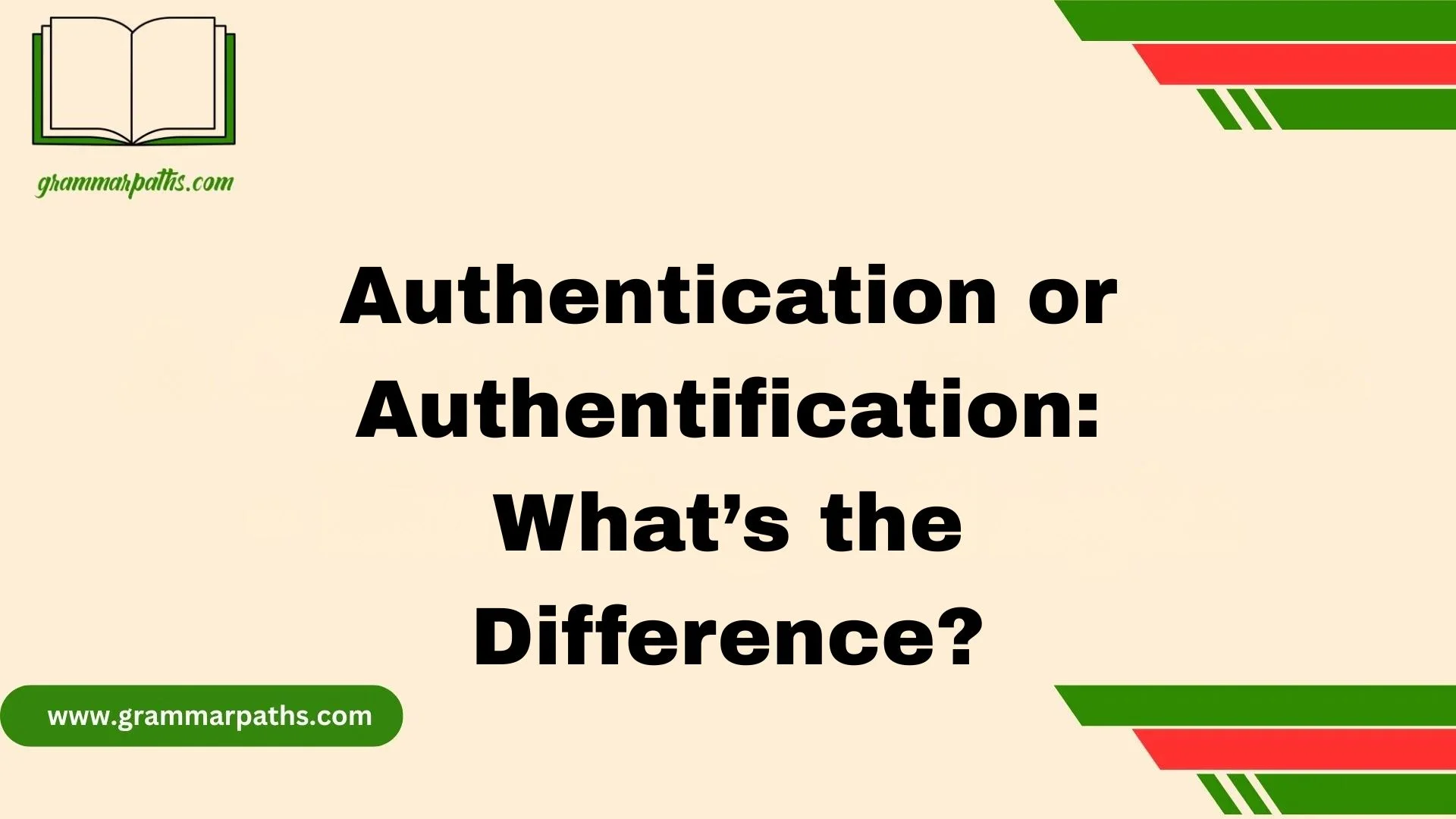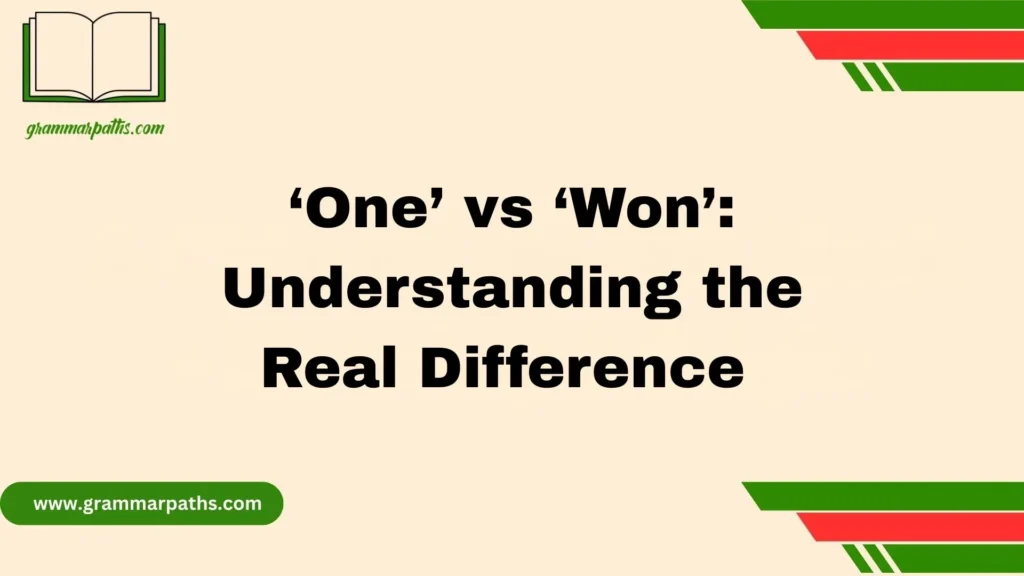The English language is both fascinating and tricky—just when you think you’ve got the hang of one word, another pops up with a twist that throws your sense of balance. I’ve noticed over the years that even a tiny change in spelling can alter meanings entirely, creating confusion where clarity should be. This is especially true when discussing Authentication or Authentification: What’s the Difference? Both sound similar, yet they don’t mean the same thing. The devil hides in the details, as they say, because these terms often get tangled in conversations about security, identity, and trustworthiness—whether online or offline. It’s truly interesting how a subtle distinction can set them apart and completely change how we understand safety on the internet.
From my experience working on website systems, I learned that authentication is the correct term used to describe the process of proving that someone or something is real and true. When logging in, the system requires a password as proof of who you say you are. On the other hand, authentification is not widely recognized in the English language and is often considered a mistake. Yet, people still use it when talking about verifying the truth, which adds to the linguistic puzzle. Gaining an understanding of this difference helps avoid confusion, keeps our words sharp, and reminds us that the world of language is an endless journey filled with twists, turns, and a dozen delightful details that make it truly intriguing.
Why People Confuse “Authentication” and “Authentification”
The confusion between authentication and authentification often stems from the illusion that both are valid English words. After all, you might have seen “authentification” in technical manuals, government documents, or websites translated from other languages.
However, in American English, only “authentication” is recognized as correct.
The term “authentification” creeps in due to influence from French, where it is indeed the right word. But in English, it’s not officially recognized by dictionaries or linguistic authorities.
Here’s why it matters:
- Using “authentification” in professional or technical writing can undermine your credibility.
- In cybersecurity, even a tiny miscommunication can lead to confusion, compliance issues, or errors in documentation.
So, understanding the difference isn’t just about grammar — it’s about precision.
What “Authentication” Really Means
In simple terms, authentication means verifying that something or someone is genuine. It’s the process of confirming that an identity, document, or item is what it claims to be.
You encounter authentication daily without realizing it.
Here are some examples:
- Logging into your email account — entering your password verifies your identity.
- Scanning your fingerprint or face to unlock your phone.
- Showing your driver’s license at a security checkpoint.
- An art expert verifying the authenticity of a painting.
In each case, authentication ensures trust between two parties.
According to Merriam-Webster, authentication is “an act, process, or method of proving something (as a document) to be genuine.”
Key takeaway:
In both technology and everyday use, authentication is the act of verification — the gatekeeper of trust.
Why “Authentification” Is Technically Incorrect
Let’s be clear — authentification is not a correct English word. It sneaks into use because of translation errors or non-native influence, especially from French.
In professional English dictionaries — Merriam-Webster, Oxford English Dictionary, and Cambridge Dictionary — authentification doesn’t appear as a valid entry. Some older or localized software documentation may contain it, but that doesn’t make it standard.
Here’s a quick comparison:
| Term | Correct? | Notes |
| Authentication | ✅ Yes | Officially recognized in English dictionaries |
| Authentification | ❌ No | French borrowing; not used in standard English |
So, when writing documentation, reports, or digital security materials, always use authentication. Using “authentification” may confuse your audience or make your text appear poorly localized.
Linguistic Roots: Where Each Word Comes From
To understand why only authentication stuck in English, it helps to explore their origins.
- Authentication comes from the Greek word authentikos, meaning “genuine” or “original.”
- It passed through Latin (authenticare) before entering Middle English in the 15th century.
- In contrast, authentification emerged from French — specifically from authentifier, meaning “to authenticate.”
Because English borrowed directly from Latin, not from French, authentication became the established form. Meanwhile, in French, authentification remains correct to this day.
Here’s the difference summarized:
| Language | Root | Modern Form | Meaning |
| Greek | authentikos | Authentic | Genuine or real |
| Latin | authenticare | Authenticate | To make genuine |
| English | authentication | Authentication | The act of verifying |
| French | authentifier | Authentification | The act of verifying (in French only) |
So if you’re writing in English — particularly American English — stick with authentication. It’s not just correct; it’s historically grounded.
The French Connection: Why “Authentification” Exists in French but Not English
The French language uses authentification perfectly correctly. In French grammar, the suffix “-ification” forms nouns that describe processes (modification, classification, identification). Therefore, authentification in French means “the process of making something authentic.”
For example:
“L’authentification par mot de passe” translates to “password authentication” in English.
That’s why you may see authentification used in technical documentation from French-speaking regions — such as Canada, Belgium, or France.
Here’s a comparison:
| Language | Correct Term | Example |
| English | Authentication | Multi-factor authentication is essential for account security. |
| French | Authentification | L’authentification biométrique protège les données sensibles. |
Why the confusion happens
Many global companies translate French technical documents into English without fully localizing the vocabulary. That’s how “authentification” slips into English texts — not as a real word, but as a translation artifact.
Correct Spelling in U.S. English: How to Remember It
If you often mix up authentication and authentification, here are a few simple tricks to remember which one is right:
- Think “authentic” + “-ation.” You’re verifying authenticity, so it’s authentication.
- Spell-check it. If your software marks “authentification” red, trust it — it’s not English.
- Use this pronunciation tip:
- Authentication = aw-THEN-tuh-KAY-shun
- Notice the smooth rhythm; the French form doesn’t flow naturally in English speech.
- Mnemonic:
“If it’s about being authentic, then it’s authentication.”
These simple cues can save you from embarrassment in professional writing or digital security documentation.
Authentication in the Digital World: Meaning and Importance
In technology, authentication has a critical role — it’s the gatekeeper of access. Whether you’re logging into a social media account or accessing a corporate server, authentication ensures you are who you say you are.
Why it matters
- Prevents unauthorized access to systems or data.
- Protects against identity theft and data breaches.
- Builds user trust in digital systems.
- Helps organizations comply with cybersecurity regulations (like NIST SP 800-63 in the U.S.).
Three core authentication factors
Every authentication system relies on at least one of these factors:
| Factor Type | Description | Example |
| Something you know | Information only you should know | Password, PIN |
| Something you have | A physical device you possess | Smartphone, token |
| Something you are | Biometric identifier unique to you | Fingerprint, face, iris |
Modern systems often combine multiple factors to strengthen security — a practice known as multi-factor authentication (MFA).
Quote: “Passwords alone are no longer enough to protect your digital identity. Multi-factor authentication is the new baseline.” — Cybersecurity & Infrastructure Security Agency (CISA)
Common Authentication Methods and How They Work
Authentication isn’t one-size-fits-all. Different systems use various methods depending on security needs and user convenience.
Password-Based Authentication
Still the most common method, though far from perfect. Weak passwords remain a leading cause of breaches.
Tip: Always use a mix of upper/lowercase letters, numbers, and symbols.
Two-Factor Authentication (2FA)
Adds a second step — often a code sent to your phone or email. This method blocks over 90% of automated hacking attempts.
Multi-Factor Authentication (MFA)
Expands on 2FA by using more than two verification factors. Common in banking and government systems.
Biometric Authentication
Uses physical characteristics like fingerprints, voice, or facial patterns.
Example: Apple’s Face ID combines convenience with strong security.
Token-Based Authentication
Used in APIs and app integrations. Tokens verify users without repeatedly requesting credentials.
Example: OAuth 2.0 standard used by Google and Facebook.
Case Study: Real-World Breach
In 2023, a major U.S. healthcare provider suffered a data breach exposing millions of patient records. The cause? Single-factor authentication on internal systems. Afterward, the company implemented MFA and biometric logins — drastically reducing unauthorized access.
How Authentication Impacts User Experience and Security
Security and convenience often pull in opposite directions. Strong authentication adds layers of protection, but too many steps frustrate users.
The balancing act
- Too simple: Easy access, weak protection.
- Too complex: Secure but annoying.
Example: Apple’s Face ID offers near-instant login while maintaining high security — a model of balance.
For businesses
U.S. companies increasingly invest in adaptive authentication — systems that adjust verification requirements based on user behavior.
If someone logs in from a new location, the system may request extra proof. If behavior matches usual patterns, fewer steps are needed.
“The best authentication system is invisible — secure enough to protect, simple enough to forget.” — Security Engineer, Microsoft Identity Team
Real-World Misuse: Where “Authentification” Still Appears
Despite being incorrect in English, authentification pops up surprisingly often. You might find it in:
- Translated documentation from French-speaking organizations
- Technical manuals from multinational corporations
- Poorly localized software interfaces
Why it matters
Misusing terms can:
- Confuse users or developers
- Create inconsistencies in documentation
- Undermine professionalism in business communication
If you’re drafting English materials, always replace “authentification” with “authentication.”
Correct terminology reflects competence — a vital trait in cybersecurity and IT fields.
Final Takeaway: “Authentication” Wins — Every Time
Let’s settle it once and for all:
| Term | Meaning | Correct Usage |
| Authentication | The act of verifying something’s legitimacy | Correct in English |
| Authentification | French word for the same concept | Incorrect in English |
In English, only “authentication” is right.
It’s the standard term used by major U.S. tech companies, government agencies, and dictionaries.
Remember:
“In English, authenticity is proven through authentication — never authentification.”
Whether you’re writing code, creating documentation, or sending professional emails, use the right word. It signals precision, professionalism, and linguistic awareness.
FAQs
1. What does “authentication” mean?
Authentication refers to the process of proving that someone or something is real and true. It’s a key concept in security, especially for online systems that use passwords or digital credentials.
2. Is “authentification” a real word?
While you may hear or see authentification, it’s not a widely recognized or correct term in English. The accepted word is authentication.
3. Why do people confuse authentication and authentification?
They sound similar, and both relate to verifying identity and trustworthiness, but only authentication is the correct term used globally.
4. Where is authentication used in real life?
You’ll find authentication in everyday activities like logging into websites, accessing banking apps, or verifying user identities in security systems.
5. How can I remember the difference easily?
Think of authentication as “authentic”—both share the same root, which means real or true. That small clue keeps you from mixing them up.
Conclusion
Understanding the fine distinction between authentication and authentification sharpens your grasp of the English language and prevents common mistakes. These terms, though similar in sound, carry very different meanings. In a world where security, identity, and trustworthiness matter more than ever, using the correct term ensures clarity and professional accuracy—both online and offline. So next time you come across these words, you’ll know exactly which one to use and why.

Emma Brooke is a passionate language expert and contributor at GrammarPaths.com, where she helps learners navigate the complexities of English grammar, idioms, and effective writing. With a strong academic background and years of teaching experience, Emma excels at turning tricky grammar rules into simple, practical lessons that readers can easily grasp.












